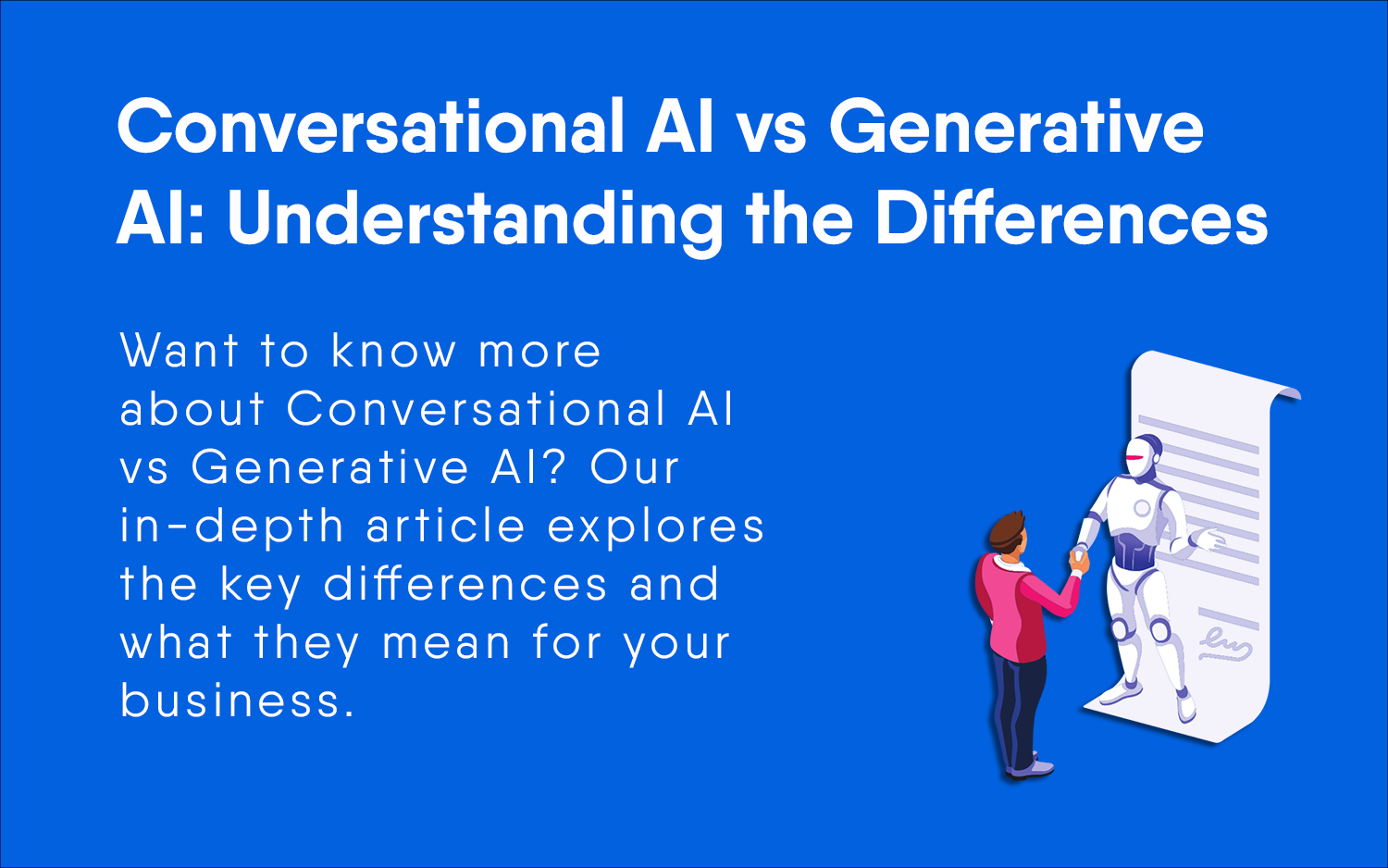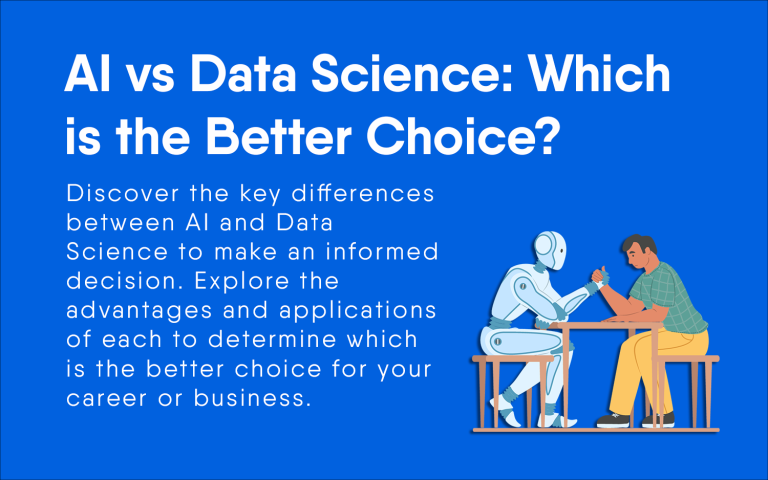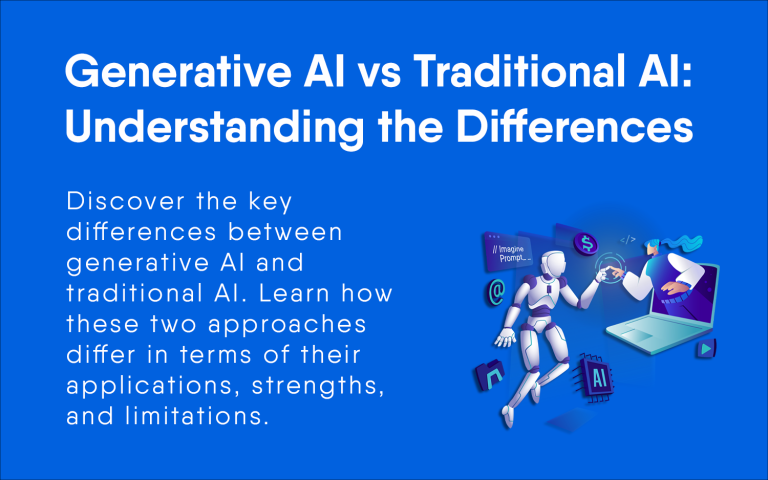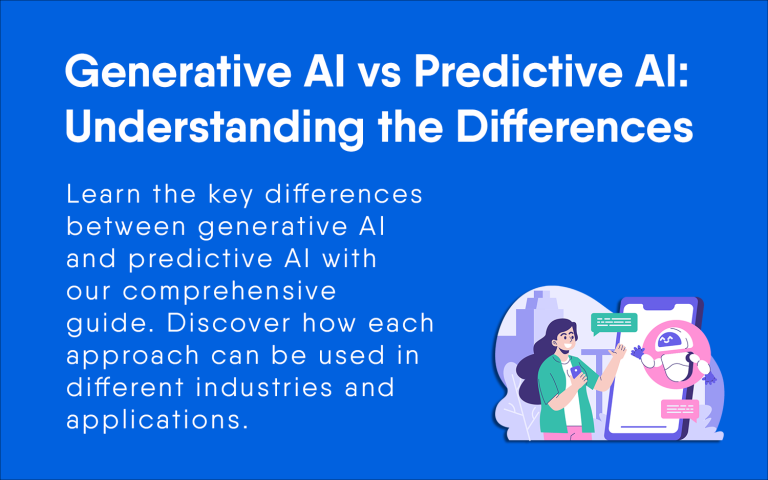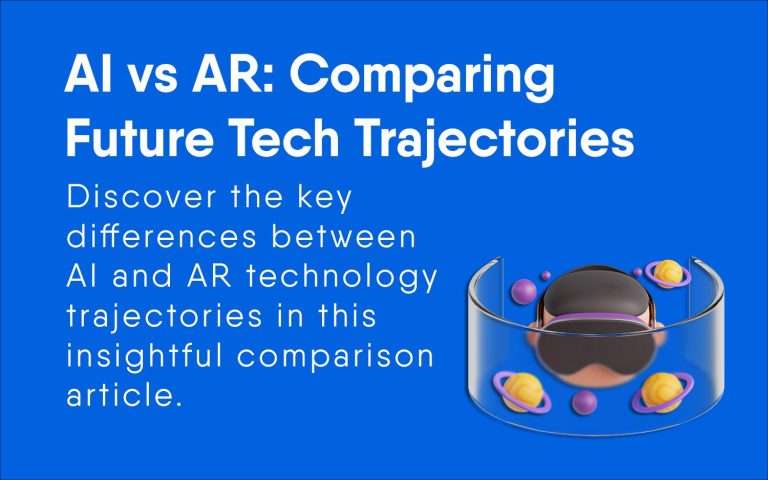Conversational AI vs Generative AI: Understanding the Differences
Conversational AI and generative AI may seem similar. They have differences. Conversational AI refers to the technology that enables machines to engage with humans in an human manner. It finds applications, in chatbots, voice assistants and other systems that require machines to comprehend and respond to language.

On the hand generative AI is a form of intelligence that generates fresh content like text, images and videos. By analyzing existing data patterns using machine learning algorithms it creates content based on those patterns. Generative AI finds its use in fields such as art and music well as practical domains like data analysis and forecasting.
While conversational AI and generative AI utilize approaches both rely on intelligence algorithms and machine learning techniques, for their operations. Conversational AI leverages natural language processing (NLP) algorithms to understand language and formulate responses. In contrast generative AI employs deep learning algorithms to recognize patterns and generate content. Both of these technologies are rapidly. Are expected to play significant roles in our lives in the years ahead.
Understanding AI: Conversational vs Generative
There is a video, on YouTube titled “Conversational vs Generative” that explores the differences between two developments in Artificial Intelligence (AI). AI is a field that encompasses technologies like machine learning, neural networks and other models. Conversational AI and generative AI are two branches within this field.
Conversational AI refers to systems that can engage in human conversations with users. These systems utilize natural language processing (NLP). Machine learning algorithms to understand user input and provide responses. Familiar examples of AI include chatbots, Siri and Alexa.
Generative AI on the hand focuses on creating content such as images, videos and text. It employs deep learning algorithms and neural networks to learn patterns from existing data and generate content based on those patterns. Prominent examples of AI are GPT 3 and StyleGAN.
Although AI and generative AI share some similarities their objectives and capabilities differ significantly. Conversational AI aims to understand user input and respond accordingly while generative AI focuses on generating content.
In terms of applications conversational AI finds use in customer service by automating responses to frequently asked questions thereby reducing the workload, for agents.
Generative AI on the hand finds applications, in fields such as art and design enabling the creation of fresh and innovative works. Overall both conversational AI and generative AI are advancements in the field of intelligence. They have potential to revolutionize a range of industries and use cases.
Related Posts:
Applications and Use Cases
Some noteworthy applications of AI and generative AI include:
Chatbots and Virtual Assistants
Chatbots and virtual assistants are widely deployed across industries like customer service, healthcare and e commerce.
Leveraging natural language processing (NLP) and natural language understanding (NLU) these intelligent systems effectively interpret user queries.
They can handle inquiries like asked questions (FAQs) as well as complex ones requiring human like responses.
Content Creation and Generation
Generative AI plays a role in content creation, across mediums. It has the ability to generate text, images, music, videos, etc.
For instance powered by AI driven tools one can effortlessly create product descriptions, social media posts. Develop captivating video advertisements. They can also make music and art according to what the user likes.
Business and Customer Service
Conversational AI is employed by businesses to enhance customer service and support. Chatbots can handle customer inquiries efficiently providing responses and reducing the workload, on agents. Additionally they can offer product recommendations based on user preferences.
Education and Entertainment
In education conversational AI is utilized to deliver tailored learning experiences to students. It also finds applications in gaming and digital art creating experiences for users.
Healthcare and Accessibility
Conversational AI plays a role in healthcare by enabling consultations and improving accessibility for individuals with disabilities. Chatbots are capable of addressing queries and providing medical advice. Moreover they assist in managing appointments while sending reminders to patients.
E-commerce and Marketing
The implementation of AI in e commerce enhances the customer experience while boosting sales. Chatbots efficiently address queries related to product information, shipping, returns, etc. Furthermore they provide product recommendations based on preferences. In marketing efforts well conversational AI aids in generating engaging content that captivates customers.
Language Translation and Understanding
Conversational AI finds applications, in language translation and comprehension tasks well. It possesses the ability to accurately translate text or speech from one language into another. It also has the ability to comprehend languages and respond in the language preferred by the user.
Art and Creativity
Generative AI is employed in art and creativity to produce distinct creations. It has the capability to generate three models, music and artwork based on user preferences.
To conclude, AI and generative AI have a range of applications and practical uses. They are utilized across industries to enhance customer experience offer personalized services and generate content.
The Technology Behind AI

Artificial Intelligence (AI) is a evolving field that is revolutionizing our interaction with technology. At its core AI comprises a set of algorithms and models that enable machines to perform tasks that necessitate intelligence. Numerous technologies drive AIs capabilities, including learning, natural language processing generative adversarial networks (GANs) transformer models and machine learning algorithms.
Deep Learning and Neural Networks
Deep learning represents a subset of machine learning that leverages networks, for processing and analyzing amounts of data. These neural networks are designed after the structure of the brain consisting of layers of nodes responsible, for information processing. Deep learning models can be trained on datasets to recognize patterns accurately and make predictions.
Natural Language Processing and Understanding
Natural Language Processing (NLP) and Natural Language Understanding (NLU) are technologies that allow computers to comprehend and process language. NLP algorithms can analyze text and speech to extract meaning and sentiment while NLU algorithms can understand the intention, behind language and respond appropriately.
Generative Adversarial Networks
Generative Adversarial Networks (GANs) are a type of learning model comprising two networks; a generator and a discriminator. The generator generates data that resembles the training data whereas the discriminator attempts to differentiate between fake data. GANs can be employed for tasks such as generating images or text.
Transformer Models and Foundation Models
Transformer models and Foundation models are types of learning models that employ attention mechanisms to process sequences of data like text or speech. Transformer models excel in tasks such, as language translation or text summarization while Foundation models are trained models that can be fine tuned for specific objectives.
Machine Learning Algorithms and Reinforcement Learning
Machine learning algorithms encompass a range of techniques enabling computers to learn from data. Make predictions. Reinforcement learning is a type of machine learning that employs feedback to enhance algorithm performance. Reinforcement learning algorithms have applications, including game playing and robotics.
Related Posts:
Challenges and Future of AI

As AI and generative AI continue to advance there exist obstacles that need to be addressed for their success, in the future.
One major hurdle is efficiency. Despite advancements, in years AI still demands substantial computational power to function effectively. As the complexity of AI increases it will require resources potentially limiting its scalability.
Another challenge lies in generating content. Although generative AI has the capability to create material it remains constrained by the data on which it is trained. Consequently it may struggle to produce content that doesn’t rely on existing data.
Context plays a role in AI as well. While AI can comprehend commands and questions understanding the subtleties of communication poses difficulties. This can result in misunderstandings and misinterpretations that impact user experience.
Improving user experience is another aspect where AI must excel. While it possesses the potential to streamline interactions and enhance efficiency it should also prioritize user design principles.
This involves designing user interfaces that’re user friendly and easy to navigate while also making sure that AI systems can comprehend and address user requirements effectively.
Creativity is another domain where AI holds promise, for making an impact. However its potential is still constrained by the data it is trained on which might limit its ability to generate ideas.
Looking ahead AI has the potential to bring about a revolution, in industries. Yet in order to achieve this it must overcome obstacles. These challenges encompass enhancing efficiency creating content grasping context accurately enhancing the user experience and fostering innovation. As AI continues to advance and evolve further it will be fascinating to witness how these hurdles are tackled and surmounted.

Faisal Rafique
I’m an accomplished entrepreneur and content creator with a strong background in technology and software engineering. My expertise spans web development, eCommerce, programming, hosting management, technical support, and data science. I hold a Master’s Degree in Computer Science and Engineering, and I have over 5 years of professional experience, which I leverage to grow my digital business and popular blog, FaisalRafique.com

